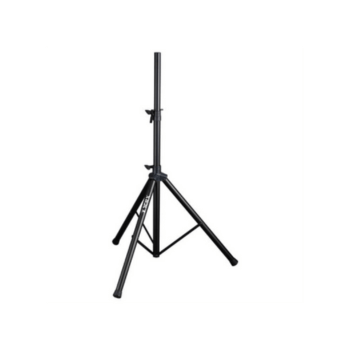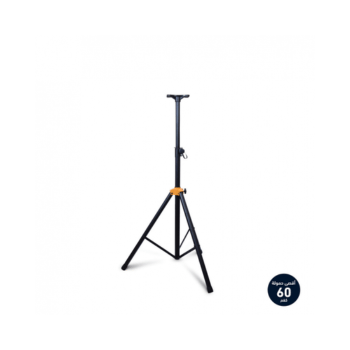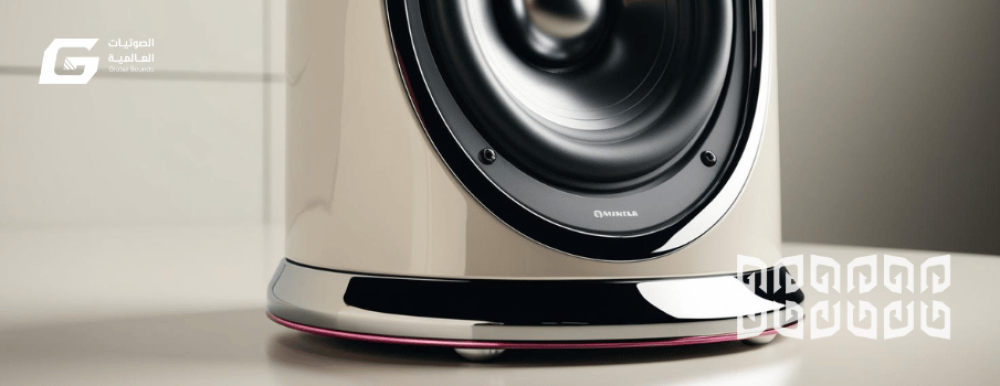Get clear, consistent sound at every angle with the right speaker stand.
When thinking about improving the sound quality in your home, studio, or even outdoor spaces like parks, the first thing that comes to mind is the type and power of speakers. However, there's a very important element that many overlook: the speaker stand .
Using a professional stand not only adds a touch of organization and elegance to the space, but also directly contributes to optimal sound distribution, reduces vibrations, and gives the user flexibility in determining the direction and height of the sound.
In this article, we'll learn everything there is to know about speaker stands, including their types, importance, criteria to consider when choosing one, and their best uses. We'll also review a selection of products suitable for various needs.
The importance of speaker stands in audio systems
1. Enhance sound quality
Placing the speaker on a tabletop or floor is completely different from installing it on a dedicated stand . Stands give the speakers a proper height that helps direct the sound toward ear level, significantly improving the listening experience.
2. Vibration isolation
High-quality stands often come with vibration-absorbing bases, which reduce sound distortion, especially when playing music at high volume.
3. Perfect sound distribution
Some stands allow you to adjust the angle of the speaker, making the sound distribution in the room more balanced and effective.
4. Protect the headphones
Instead of placing the speakers directly on the floor or uneven surfaces, the stand provides a stable and secure support, extending the life of the speakers and preventing them from being exposed to shock or damage.
How to Choose the Perfect Speaker Stand
1. Headphone type
Are you using monitor speakers, home theater speakers, or portable speakers? Each type requires a specific stand.
2. Weight and size
Choose a stand that can securely support the weight of the speaker. It's also important that it's balanced so it doesn't fall easily.
3. Materials used
The best stands are made of high-quality metal or wood. Cheap materials can cause unwanted vibrations.
4. Base and mounting system
Ensure the base has anti-slip pads or rubber pads to isolate vibrations. Also, the mounting system should be easy and secure.
5. Modification
Stands that allow for height and angle adjustment are a smart choice for greater flexibility in adjusting the direction of sound.
Uses of speaker stands
- home theaters
- audio recording studios
- Lecture and seminar halls
- modern living rooms
- Open spaces such as parks and cafes
- Presentation devices and interactive displays

Expert tips for using a headphone stand
- Place the headset at ear level when sitting.
- Avoid placing the stand in corners as they reflect sound.
- Use isolation pads between the speaker and the stand to reduce vibrations.
- Clean mounting surfaces regularly to avoid slipping or dust.
Heavy duty long stand suitable for headphones, holds up to 60 kg

Related blogs
1- Microphone stand: The best options for perfect audio performance
2- Microphone stand: The basis for sound stability and professional performance in every recording.
Conclusion
Choosing the right speaker stand isn't just a minor detail; it's an essential step in building a complete audio system that delivers a clear, balanced, and professional listening experience. Whether you're an audiophile, a home theater enthusiast, or looking to create a stylish and functional audio experience for your home or business, the right stand makes a real difference in performance.
Feel free to browse our wide selection of speaker stands designed to suit all types of uses and environments, from home theaters, to studios, to open spaces.
At Global Audio, we offer you the best options with high quality, practical designs, and competitive prices, backed by technical expertise in the world of audio systems.

